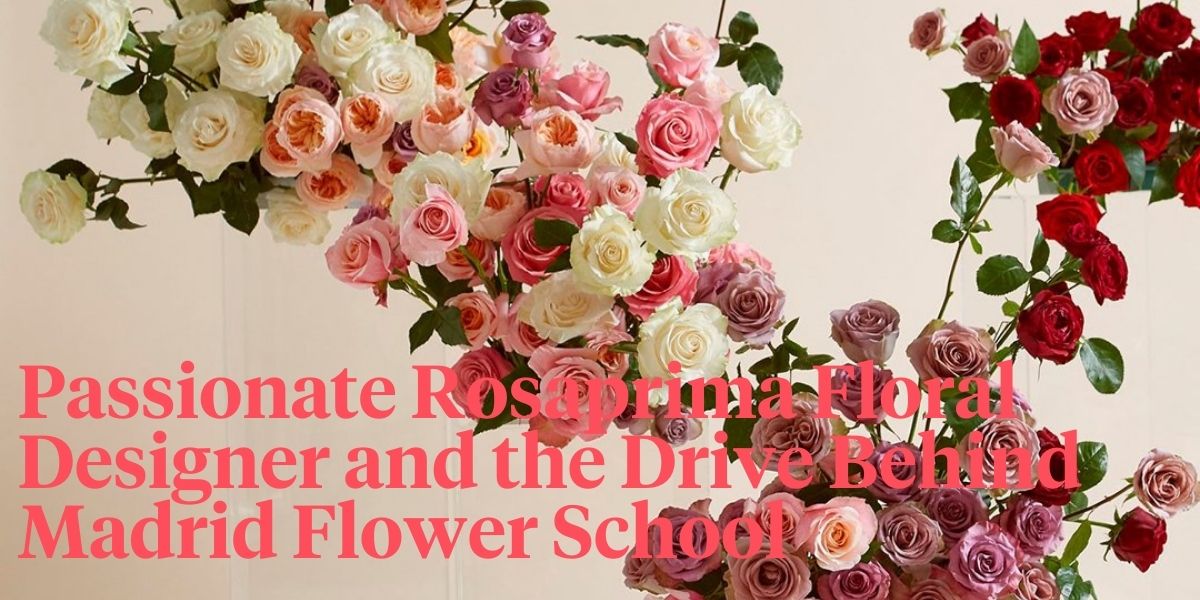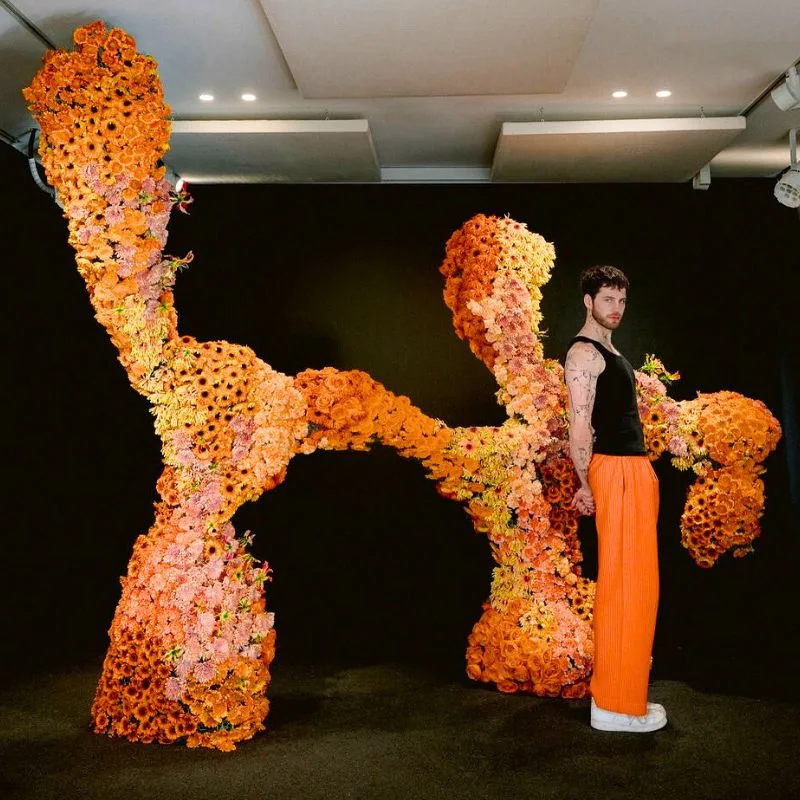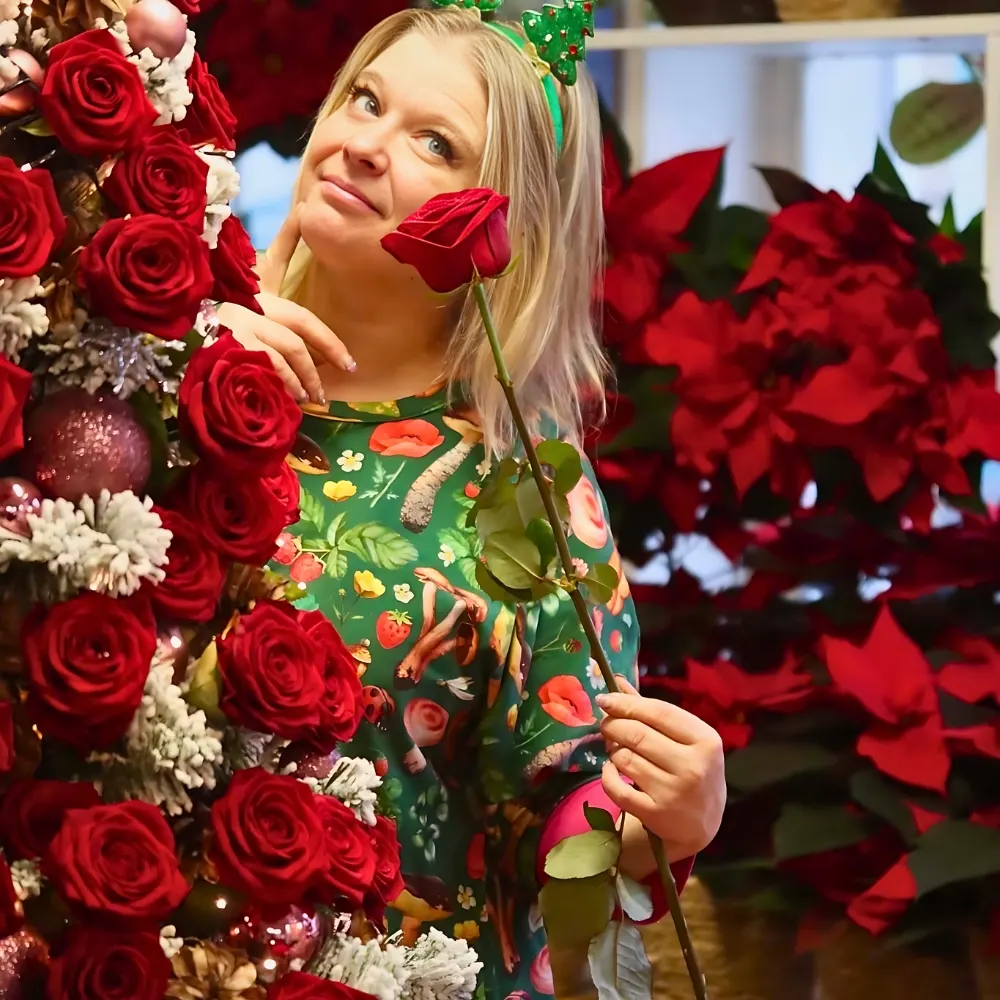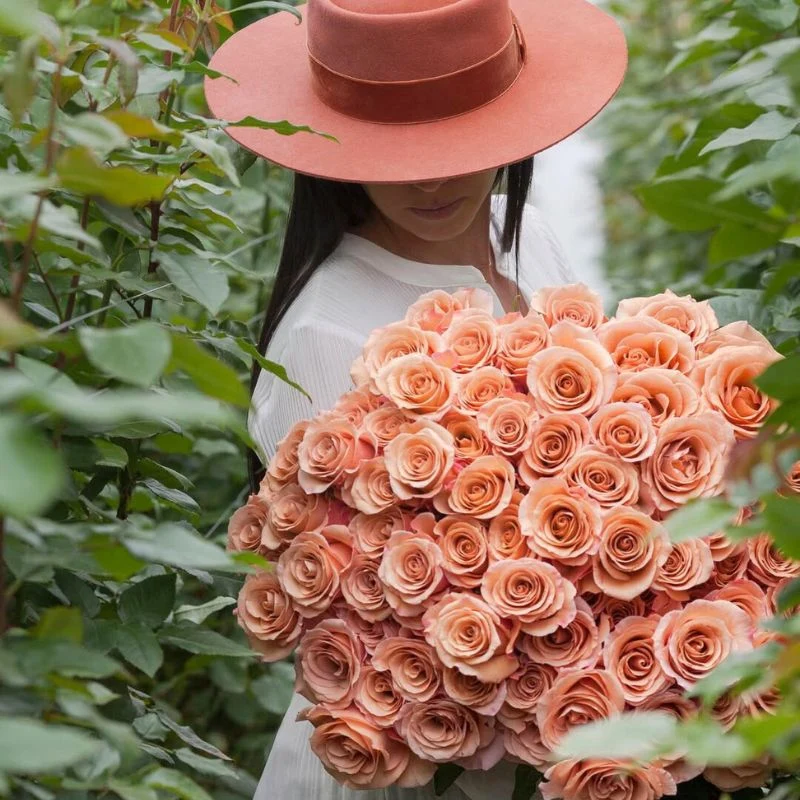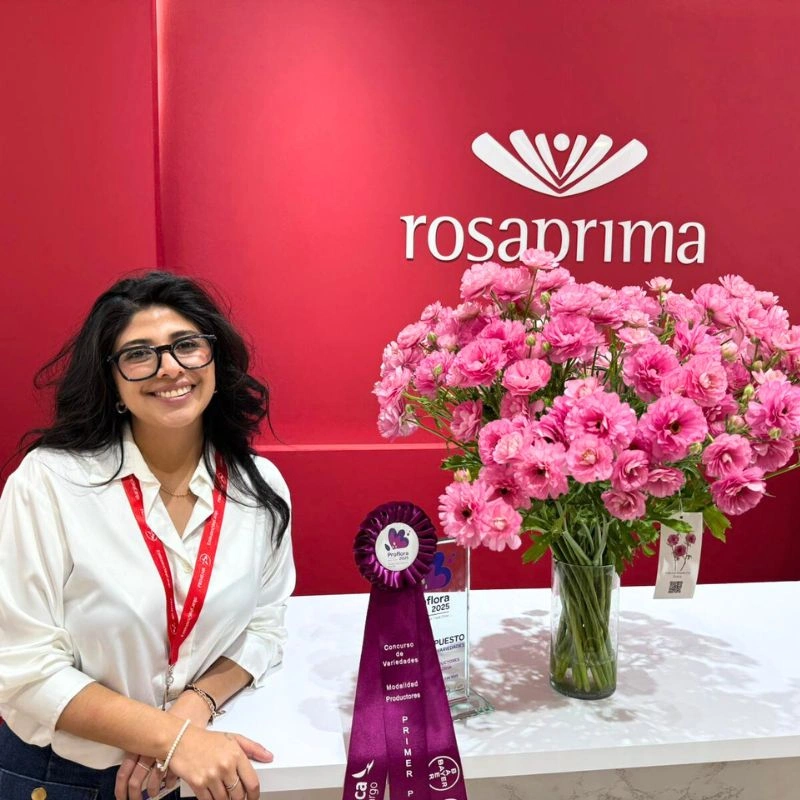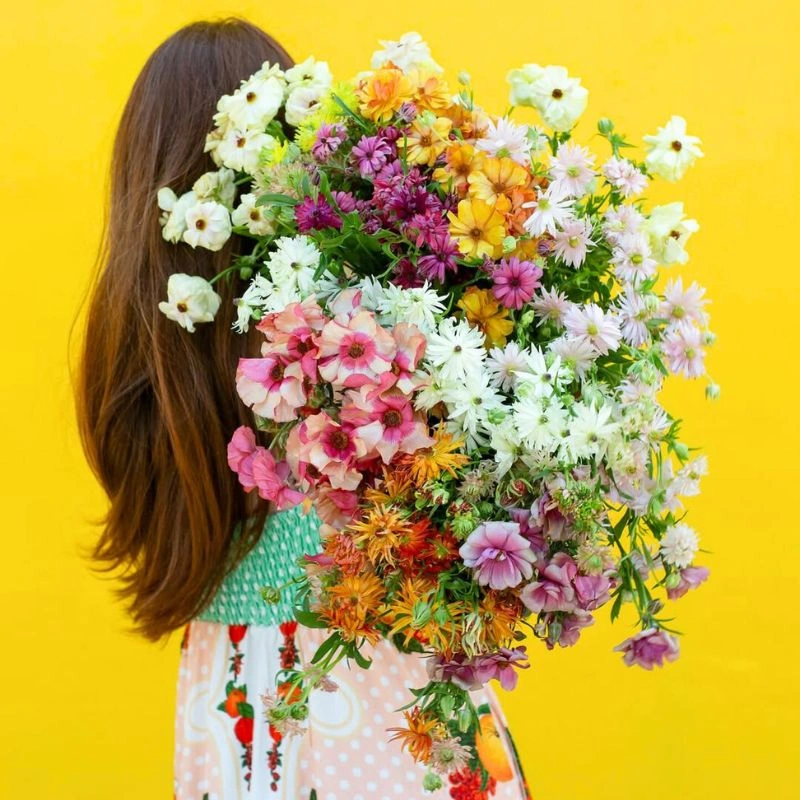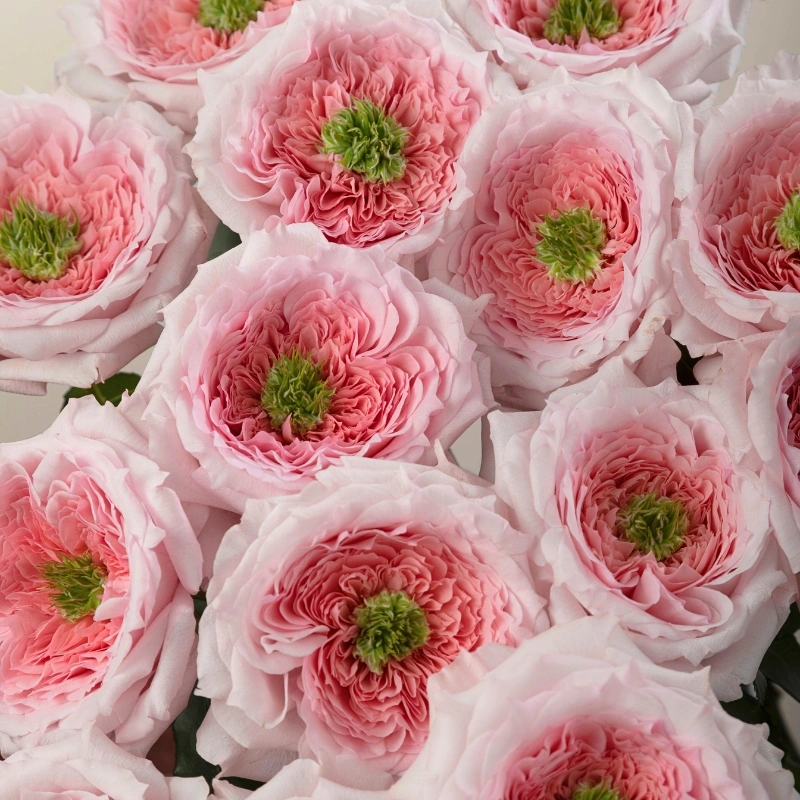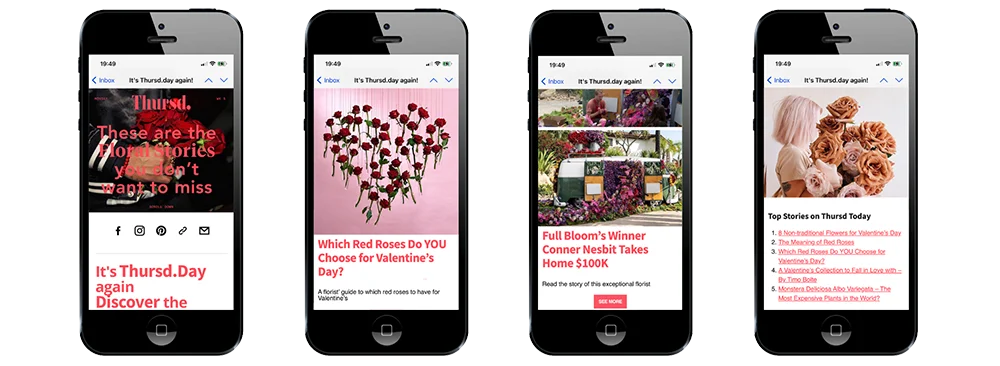Florist spotlight is a segment on Rose Stories by Rosaprima dedicated to highlighting the work of floral designers and artists, who outdo themselves every day by creating works of art with Rosaprima roses. This month's florist spotlight presents Sylvia Bustamante, floral designer, and the passionate drive behind Madrid Flower School. 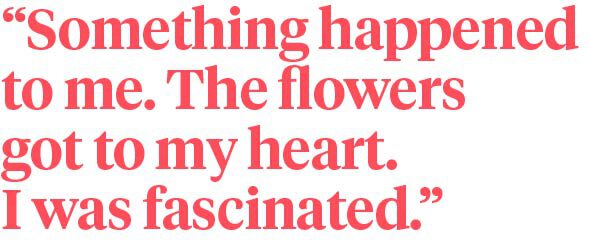
Madrid Flower School
Sylvia began working with flowers six years ago, as she moved to New York for her master's degree. She was in the middle of writing her thesis when she felt the need to do something with her hands, a need to create something immediate and tangible. So she looked into a pottery class she’d heard about.
“I was born in Chile, but my family is Peruvian. Flowers have always been a part of my life. My mom, my aunts and my great aunt have been in garden clubs. Not me, for most of my life I have been a journalist. But when I got to New York and I took my first floral workshop. That was the beginning of everything.”
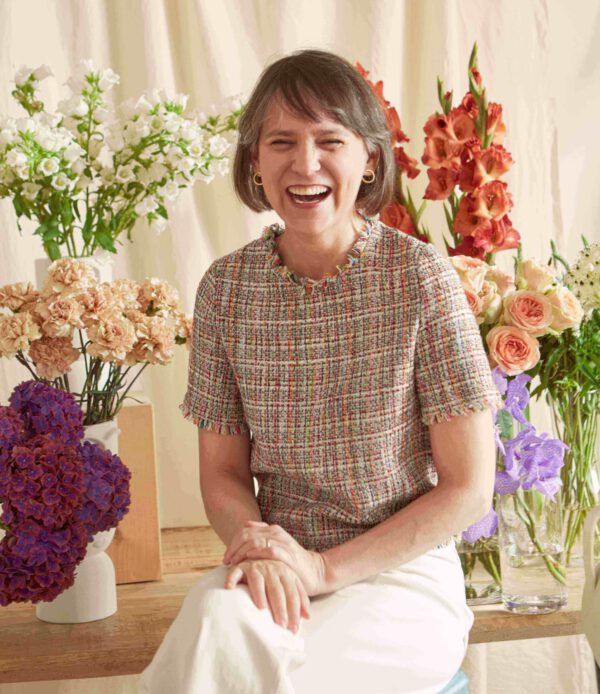
What can you tell us about your passion for floral design? How has it helped you through difficult times?
During these times of introspection and reflection, of staying inside and adapting to an unusual environment, I realized, once again, that flowers changed my life. Literally. See, when I was doing my thesis, I was 47 years I arrived in New York with my husband and my four children to follow my dream: to become a writer. My professor suggested I write my thesis about a difficult time in my life. It was hard to look back. As I relived painful moments, I felt the need to do something with my hands. I will never forget my first day taking a course at the Botanical Garden. I still remember the feeling when I got home with my triangle-shaped arrangement and the pink mini carnations my teacher made me put in (which I didn’t love). I had such a smile on my face! Something happened to me. They got to my heart. I was fascinated. Flowers are beautiful just as they are, but when you learn how to design with them, what you can create is glory. I always had a high sense of aesthetics and back then, in the beginning, I knew I wasn’t that good. I needed practice. I started interviewing floral designers and I couldn’t help myself from taking one floral design class after the other. Working with flowers is working with beauty. It’s creating spectacular things that would otherwise not be possible. Creations with scent, color, depth, and style. Not long after, I attended the New York Flower School where I got a certificate and then went on to the London Flower School to continue learning. Flowers became my passion. 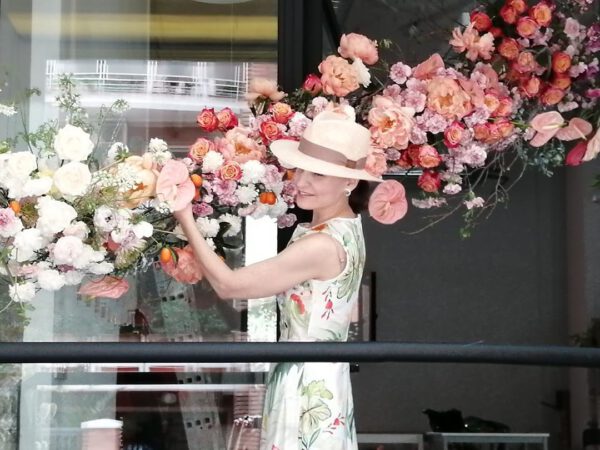
We absolutely love your work. Tell us how Madrid Flower School came about and guide us through to its latest transition.
Years passed and I moved to Madrid. I had to make a decision. Would I continue to write and work as a designer? I was trying to find a floral design school in the city and I soon realized there was nothing similar to what I was looking for. After years of taking courses and classes, I had a pretty good idea of what this would look like. This is how the Madrid Flower School was born! 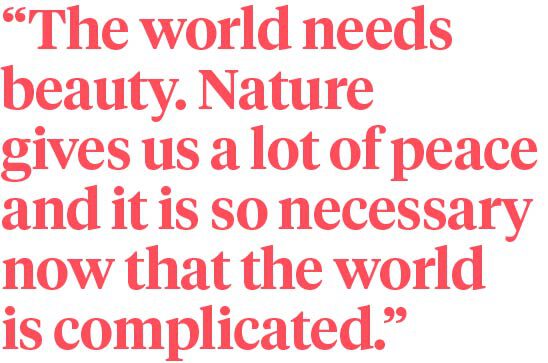 Madrid Flower School is based on a mission: to create a community and to share knowledge and beauty. We began a year ago in September, by March we had seven students for the full course. We worked in a larger studio, and as we were finishing the second week of the course, COVID sent us all home. But then, we began having classes via Zoom. Within Spain, we sent flowers to our students. For those who were abroad, we sent a guide on what to buy. We also organized masterclasses with my florist friends from the US, Mexico, and Brazil, and the money went to different NGOs. Months had gone by, and just days before giving back the keys to our space, a package arrived: boxes from Rosaprima. The roses were marvelous; the quality, extraordinary. It was Friday afternoon and there were about 600 roses. We cleaned them and left them in water. By Monday, the roses were open. We put up an installation and took photographs. After that, we left a sign on the street that read: Flowers for Free. Soon, there was a crowd at our door. People in line, and even some fighting to get the roses. One teammate had to remain there just to keep order. People were fascinated!
Madrid Flower School is based on a mission: to create a community and to share knowledge and beauty. We began a year ago in September, by March we had seven students for the full course. We worked in a larger studio, and as we were finishing the second week of the course, COVID sent us all home. But then, we began having classes via Zoom. Within Spain, we sent flowers to our students. For those who were abroad, we sent a guide on what to buy. We also organized masterclasses with my florist friends from the US, Mexico, and Brazil, and the money went to different NGOs. Months had gone by, and just days before giving back the keys to our space, a package arrived: boxes from Rosaprima. The roses were marvelous; the quality, extraordinary. It was Friday afternoon and there were about 600 roses. We cleaned them and left them in water. By Monday, the roses were open. We put up an installation and took photographs. After that, we left a sign on the street that read: Flowers for Free. Soon, there was a crowd at our door. People in line, and even some fighting to get the roses. One teammate had to remain there just to keep order. People were fascinated!  We have now moved to a smaller studio, but we’ve been working on something special. In October we’re starting a 4-week professional program by streaming. Now, students from around the world can take our floral design course in Spanish. I have a magnificent team that has made this happen. They are my accomplices; they cheer me on with my crazy ideas, and they come up with some pretty crazy ideas of their own! Why? The world needs beauty. That is what we are here for: to give joy. Nature gives us a lot of peace and it is so necessary now that the world is complicated. There are many people who are having a rough time. Being able to deliver beauty and share artwork is wonderful.
We have now moved to a smaller studio, but we’ve been working on something special. In October we’re starting a 4-week professional program by streaming. Now, students from around the world can take our floral design course in Spanish. I have a magnificent team that has made this happen. They are my accomplices; they cheer me on with my crazy ideas, and they come up with some pretty crazy ideas of their own! Why? The world needs beauty. That is what we are here for: to give joy. Nature gives us a lot of peace and it is so necessary now that the world is complicated. There are many people who are having a rough time. Being able to deliver beauty and share artwork is wonderful. 
Tell us a bit about España Florecerá (Spain Will Bloom) and Latinoamérica Florecerá (Latinamerica Will Bloom)…
When COVID hit, the floral industry (as well as many others) was going through a very hard time. After seeing the impact and the hardships, I was determined to invite flower growers, producers, florists, and suppliers, to join in the conversation. First, I started with Spain and we had 100 people at one virtual meeting. In a business that is sometimes divided, it was gratifying to see how we all got together to speak about our needs, our reality. Afterwards, these conversations also took place in Latin America. Peru was exceptional. Lili Rivera, director of Floral Trendy Flower School, thought Latinoamerica Florecerá was a great idea. She organized meetings with florists and really worked the extra mile, trying to reach the media and building a strong campaign. Peru’s harvest was affected by a frost not long ago, so COVID restrictions added new losses to the flower growers of the Andes. She organized the community, caught the attention of the television and the movement reached the Peruvian Government. Not long after, a special decree law was passed: cutting, gathering, transporting, and selling flowers was authorized during the confinement. Flowers markets opened and florists went back to work. It was a triumph. Today the movement has extended to other countries of Latin America. Argentina Florece, México Florece, Bolivia Florece and Peru Florece are some of them. 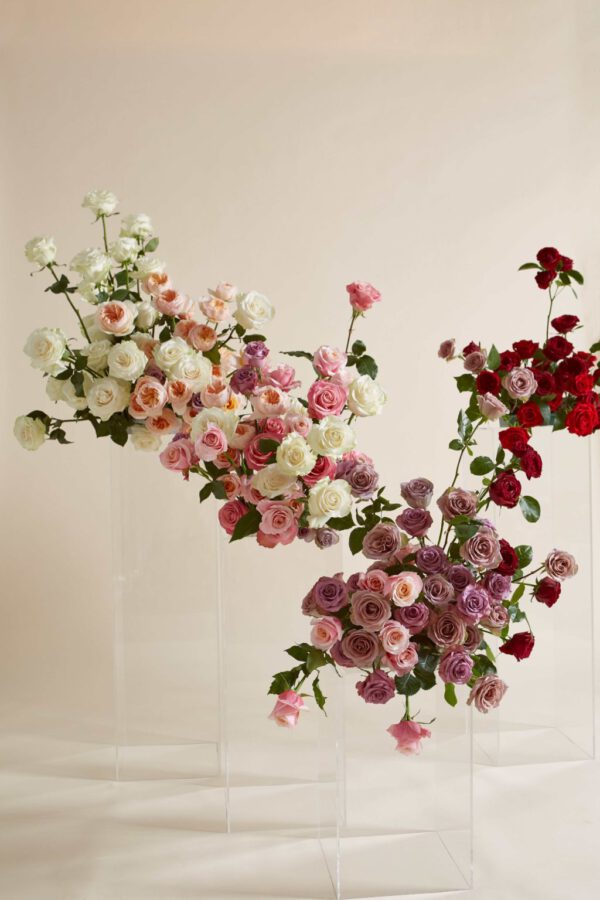
What do you like about roses?
I have studied the history of roses. At some point, it was all about the tubular roses, and it seemed as if we forgot garden roses. Now they’re back with a range of roses which are a marvelous temptation. We feel honored to collaborate with you in the near future. What are the upcoming projects with Rosaprima that excite you the most? We are interested in participating in the Madrid Design Festival. It will take place in the month of February and will last 10 days. I’m going to visit the place with my architect and we want to design something special. And this is the first of a thousand things I can think to do with Rosaprima …

